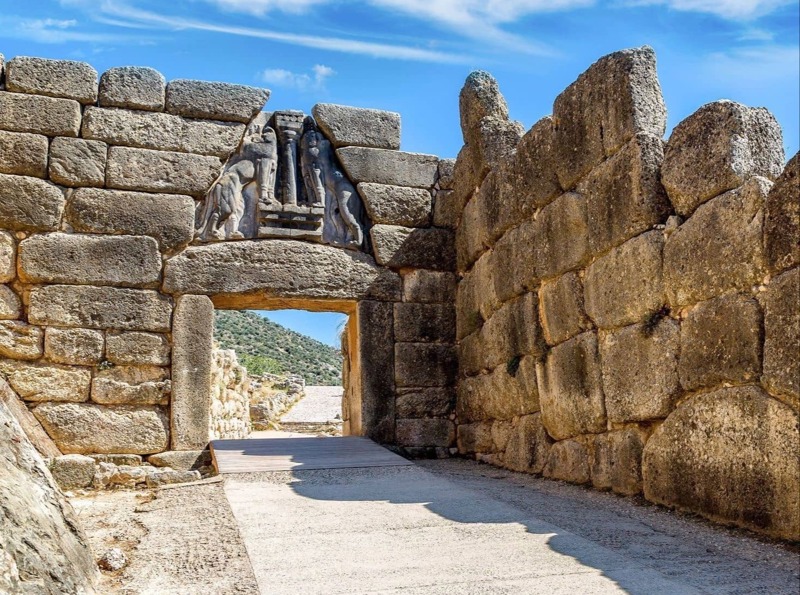Travel Log
Perched atop a rocky hill in the northeastern Peloponnese, the ancient citadel of Mycenae reigns as a testament to the grandeur and power of the Mycenaean civilization. Among its formidable fortifications stands the iconic Lion's Gate, a monumental entranceway adorned with imposing lion sculptures, symbolizing the strength and majesty of this once-mighty kingdom.
Constructed around 1250 BCE, the Lion's Gate is the oldest known monumental sculpture in Europe, serving as the main entrance to the citadel of Mycenae. As I
Joe Lee
5 chapters
28 Feb 2024
Lion's Gate at Mycenae
February 25, 2024
Perched atop a rocky hill in the northeastern Peloponnese, the ancient citadel of Mycenae reigns as a testament to the grandeur and power of the Mycenaean civilization. Among its formidable fortifications stands the iconic Lion's Gate, a monumental entranceway adorned with imposing lion sculptures, symbolizing the strength and majesty of this once-mighty kingdom.
Constructed around 1250 BCE, the Lion's Gate is the oldest known monumental sculpture in Europe, serving as the main entrance to the citadel of Mycenae. As I

approached the Gate, I couldn't help but be amazed by its construction's sheer size and intricacy. The massive stone blocks, expertly carved and fitted together without mortar, spoke to the engineering prowess of the Mycenaean architects.
The centerpiece of the Lion's Gate is the relief sculpture depicting two lionesses standing guard on either side of a central column. Their imposing presence exudes an aura of strength and authority, warning would-be intruders of the might of Mycenae. Above the lions, a triangular pediment bears a relief depicting a mysterious figure—perhaps a goddess or a local deity—accompanied by two lions.
Beyond its architectural significance, the Lion's Gate holds profound cultural and symbolic importance for the Mycenaean civilization. It served as a potent symbol of the ruling elite's authority and military prowess, asserting Mycenae's dominance over neighboring city-states. The Lion, a common motif in Mycenaean art and mythology, represented courage, protection, and divine sanction, further enhancing the Gate's significance.
The Lion's Gate also played a crucial role in the religious and ceremonial life of Mycenae. As the primary entrance to the citadel, it was the focal point for processions, rituals, and sacrifices honoring the gods and ancestors. Its imposing presence would have instilled a sense of reverence and awe in those who passed through its threshold, underscoring the divine sanction bestowed upon the rulers of Mycenae.
Despite the passage of millennia, the Lion's Gate at Mycenae inspires wonder and admiration among visitors worldwide. Its enduring legacy is a testament to the ingenuity, artistry, and cultural achievements of the Mycenaean civilization, offering a glimpse into the rich tapestry of ancient Greek history.
Share your travel adventures like this!
Create your own travel blog in one step
Share with friends and family to follow your journey
Easy set up, no technical knowledge needed and unlimited storage!